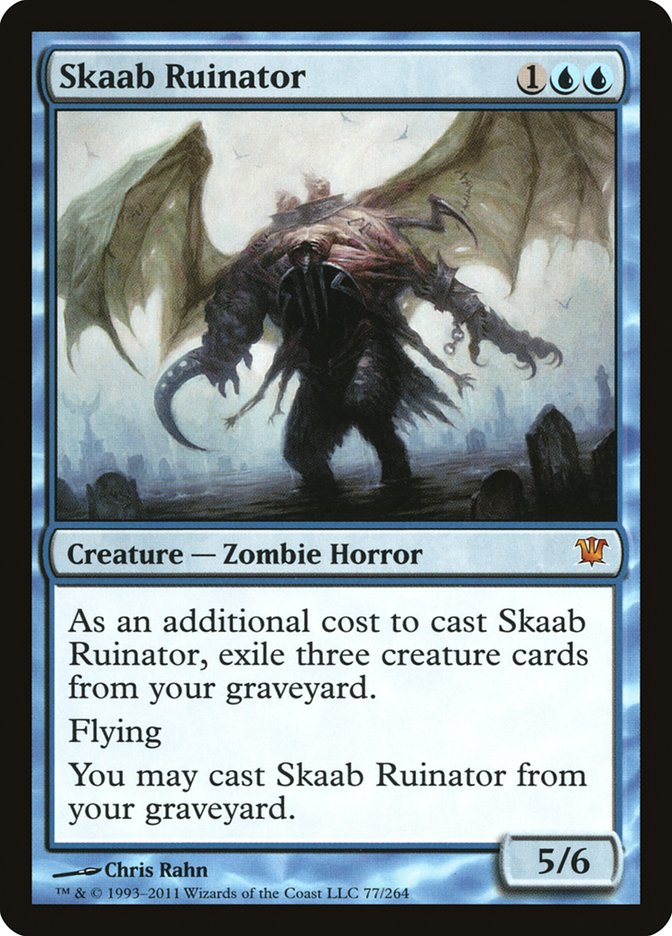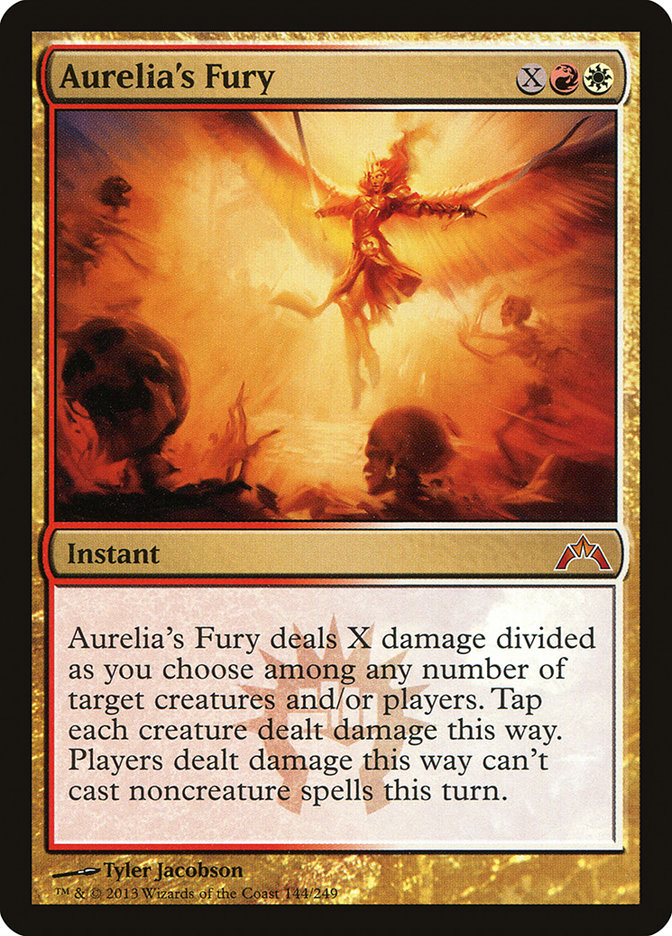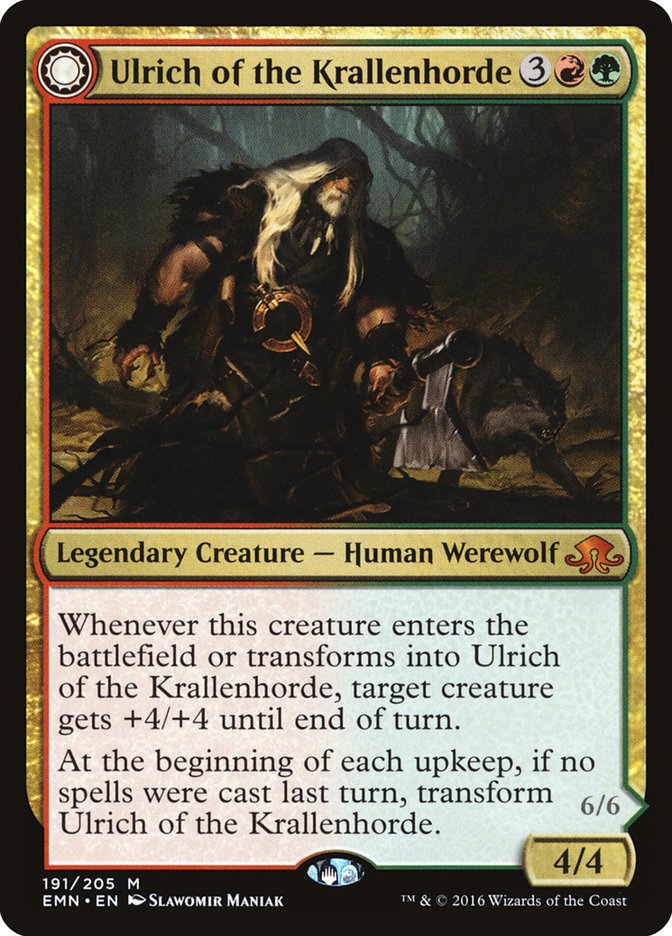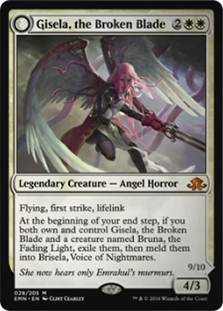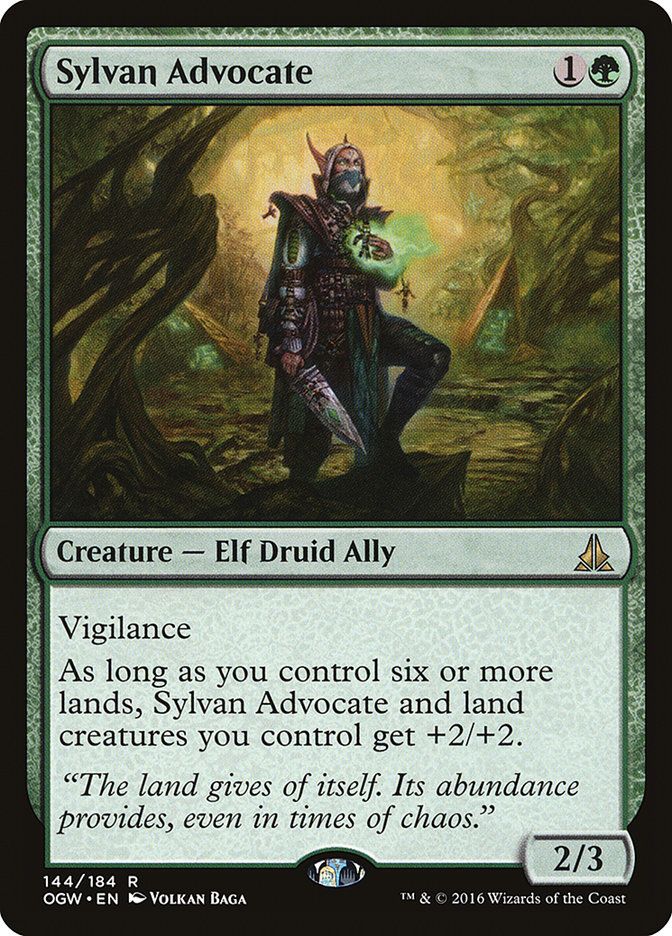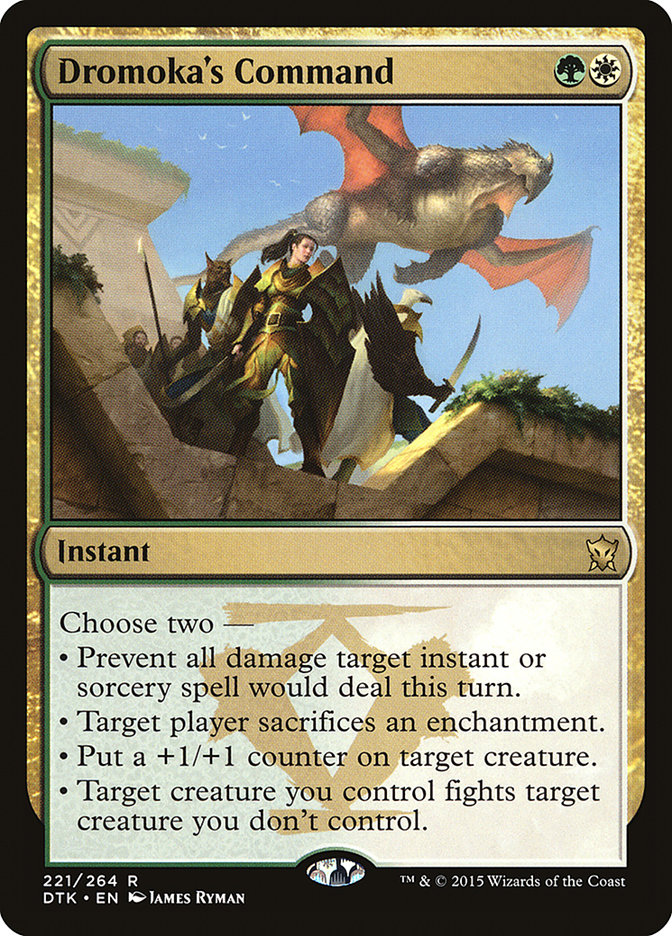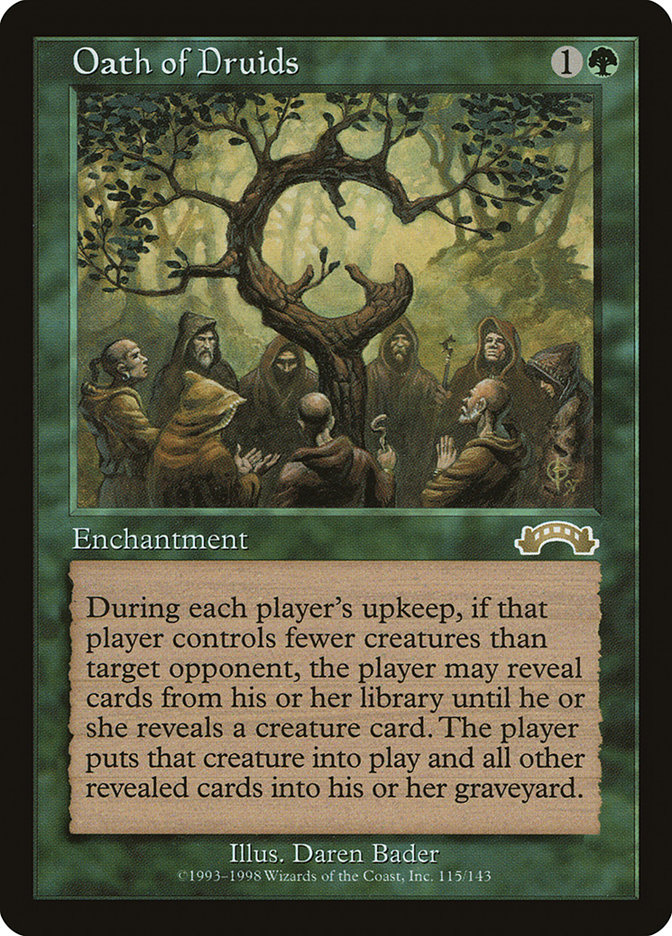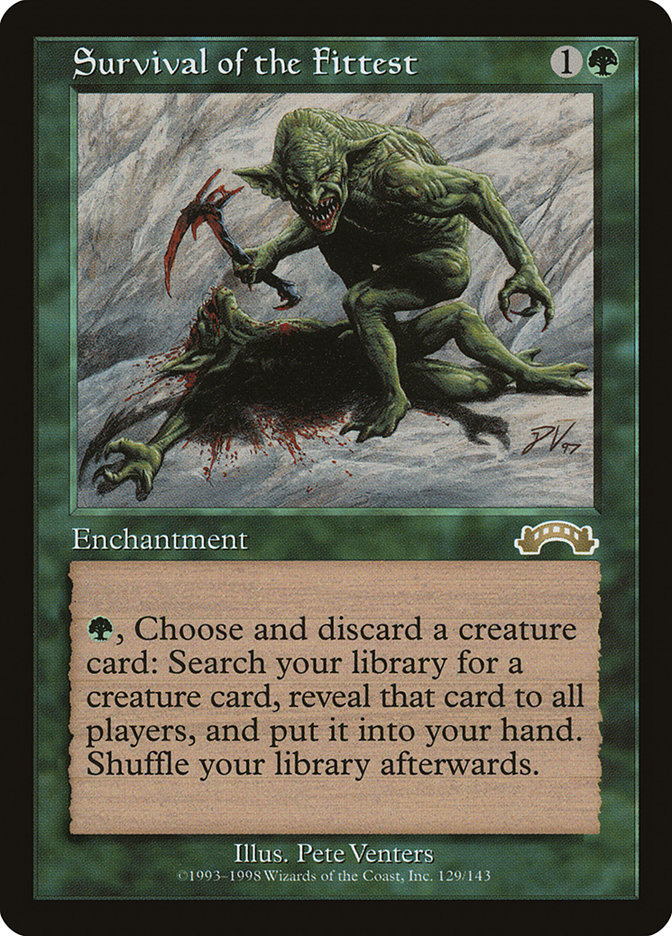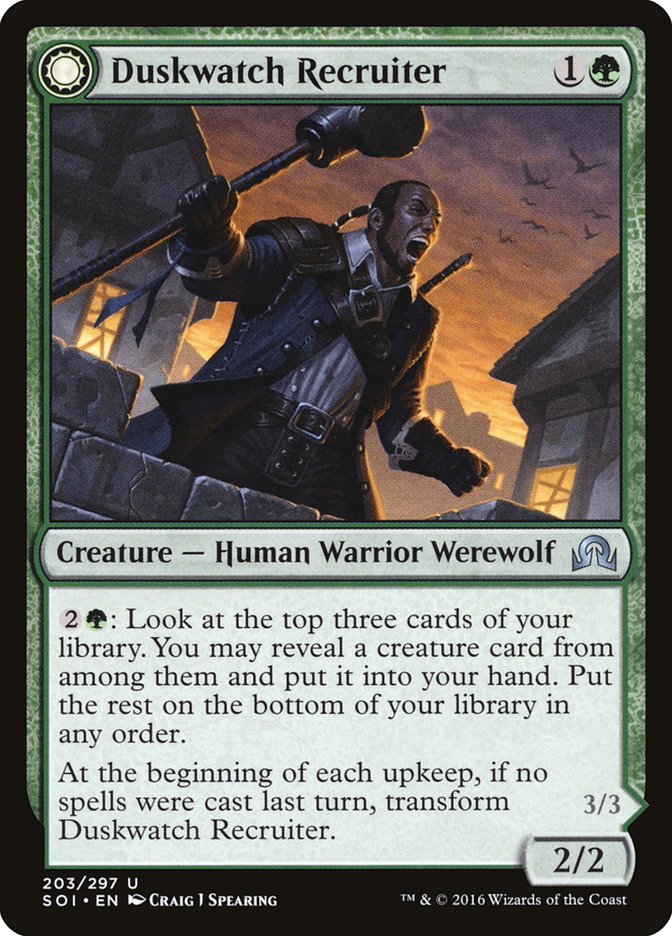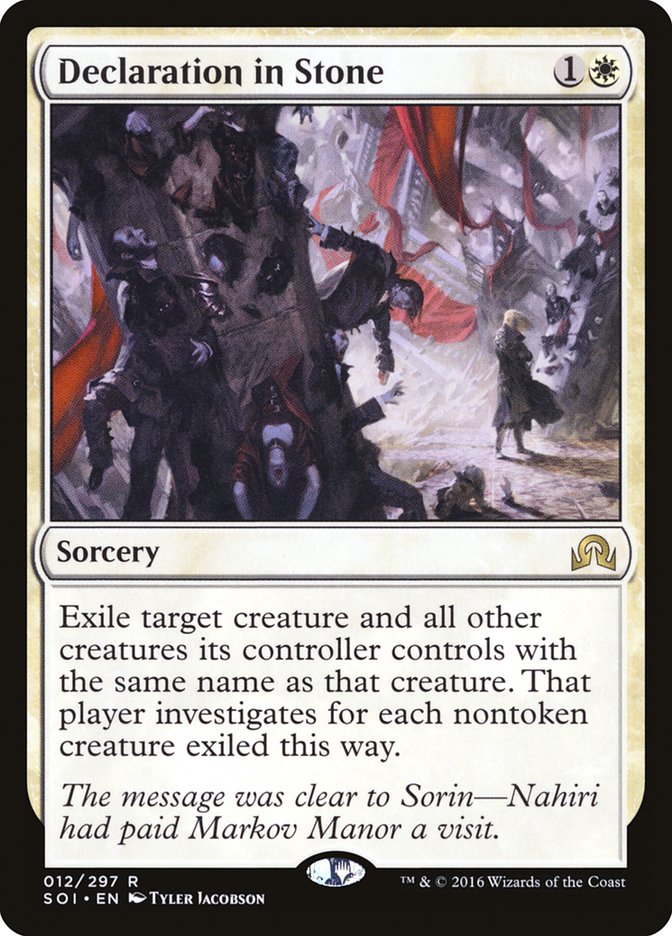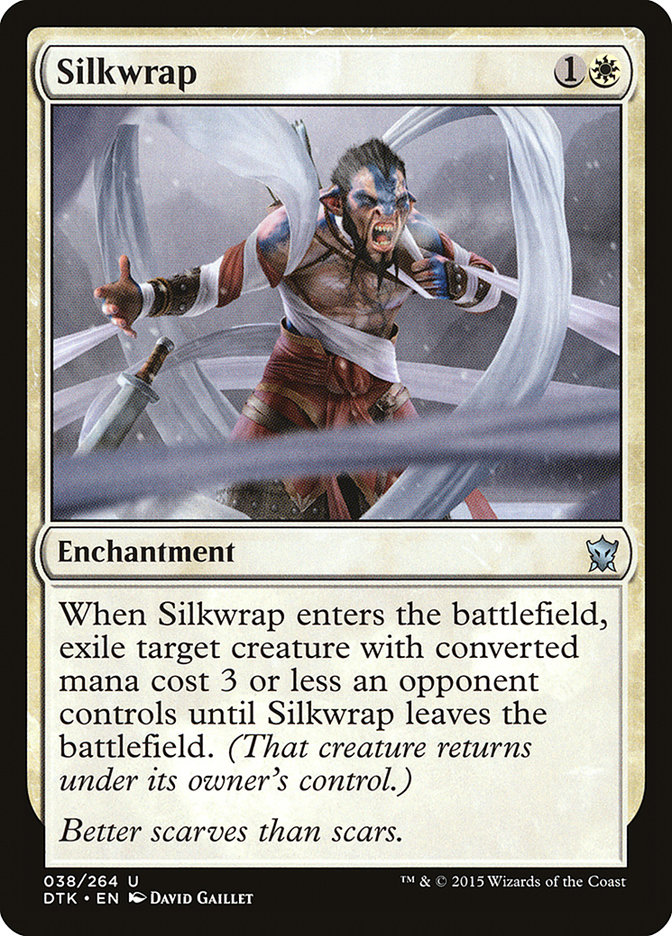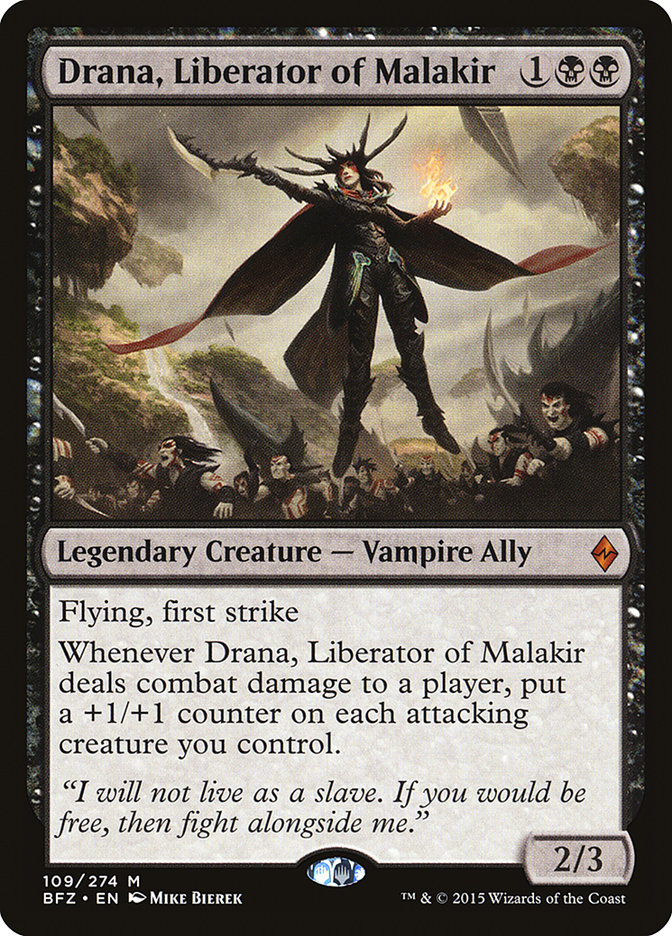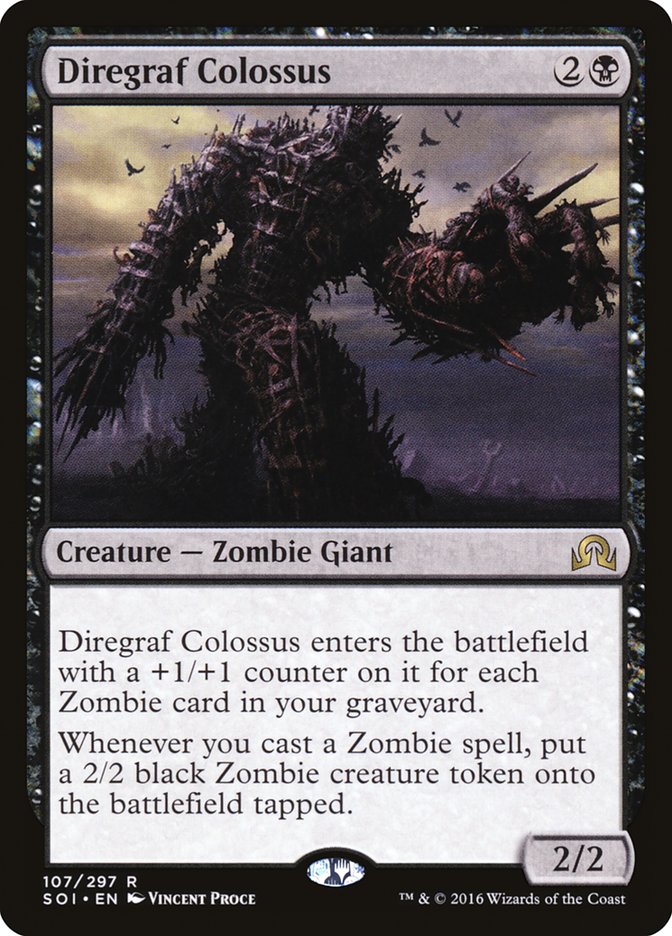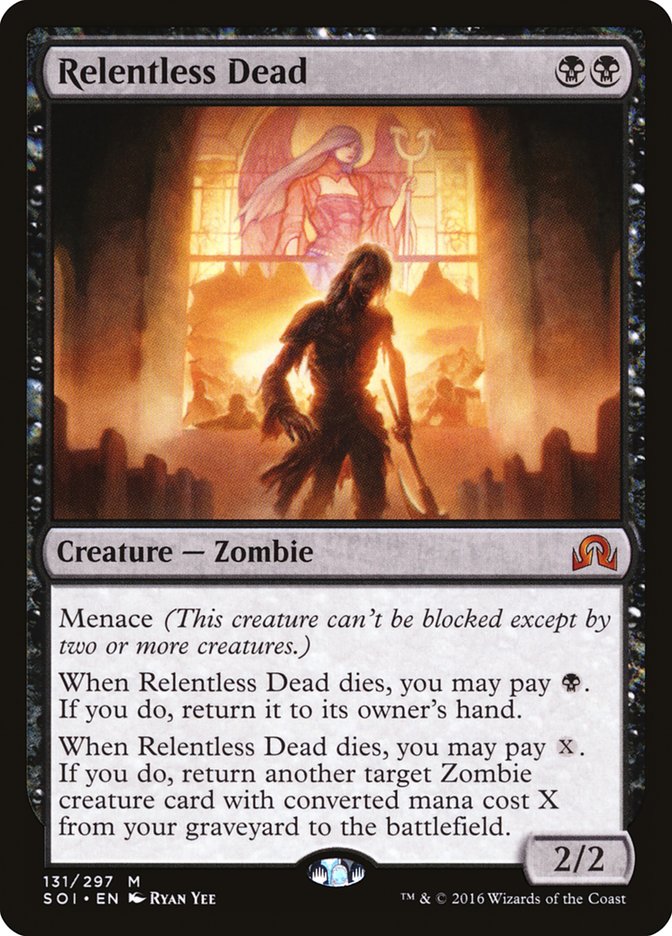Eldritch Moon will soon be upon us. Emrakul has come to wreak havoc on the residents of Innistrad. Or make them delicious cupcakes. I was never too clear on that.
Preheat the oven to 13/13, children.
Even as you’re reading this, new cards are being spoiled for us once again to dive into the great unknown and try in vain at predicting which cards are destined to be staples and which cards will join the not-so-illustrious ranks of Skaab Ruinator and Aurelia’s Fury as busts.
Tell people our story.
Before we enter the most anticipated weeks in Magic, complete with the heated arguments and mountains of sweet, albeit unplayable brews, I wanted to take some time to look back on Shadows over Innistrad Standard. This reflection serves two purposes:
One, it gives us an honest benchmark of where the format sits before Eldritch Moon. Having this benchmark gives us the proper context in which to analyze spoiled cards, thus giving us the best tools to evaluate their potential in the next Standard format.
Two, it gives us an idea of what the format is lacking so that we may better hone in on cards or strategies that fill those gaps, giving us an idea of what new archetypes are possible in a new format that will initially be populated by old decks.
To start, I’ll note that I have been quite happy with Standard in recent years.
With rare exception, no deck has dominated, and instead we have had a diverse mix of archetypes and strategies, creating many interesting decisions in deckbuilding, sideboarding, and gameplay. Players were rewarded for innovating new decks or devising new sideboard strategies to keep their opponents off-balance, and for the most part, if you planned on playing the same deck for more than a week or two, you needed to put in some serious effort to keep it current with the metagame or else you would fall behind the field.
The key to creating Standard formats that are so dynamic is balance. Cards, colors, and strategies need to be properly balanced so that the most important variable in your decision-making process is what other people are going to be doing, and the metagame never reaches a steady state where no one is incentivized to change. The whims of the hive mind change with the breeze as the natural variance in Magic creates new winners each week and hype changes the metagame for the next slate of tournaments.
If this careful balance is threatened, we end up with a situation where a small number of top decks separate themselves from the rest of the pack, leaving the most competitive players to deal with the monotony of repeating the same decision trees ad nauseam and the less competitive players to deal with the frustration of being unable to find a rogue deck that can even compete with the top tier.
Without change, everyone will become bored, even if the decisions were interesting at first. Constant change via the metagame, the influx of new cards, and the rotation of formats is what separates Magic from games like Chess and Poker. It’s what makes keeping up with the incredible complexity worthwhile, because there is the promise of a game that will never leave you listless. If you don’t like your deck, you can change it. If you don’t like Standard right now, it will change in three months. Milk may do a body good, but it’s a change of scenery that does the mind good.
To say it bluntly, Standard needs change right now. I am looking forward to Eldritch Moon more than any other set in recent memory for this reason alone.
I like playing the same deck for a long time, having done so with Elves and Maverick in Legacy, U/W Delver and Mono-Blue Devotion in Standard, and Birthing Pod in Modern, but with the exception of Mono-Blue Devotion, the rest of those decks existed in formats that changed around them, creating new challenges to face and new puzzles to solve, even if my tools remained largely unchanged. In that case, restriction does breed creativity as I was forced to find solutions to these new problems when many others would simply opt for a different deck as a simpler solution.
In this Standard format, the top decks were found fairly early in the process and did not deviate much from their initial stages. There was the rise and fall of Cryptolith Rite, the return of Humans, and the shift that G/W Tokens made to be less aggressive and more controlling, but these were minor blips on a graph that was far too stable. By #GPPITT last weekend, everyone knew what the best decks were, and you really were making a mistake by not playing one of them.
G/W Tokens was a clear top deck, a mantle it took over at the Pro Tour and never relinquished. Collected Company and Reflector Mage were as great as everyone knew they would be, and the obvious Human Aggro deck was eminently beatable if you tried but dangerous if you ignored it. Some minor players tried to make their way into the metagame, from Grixis Control to U/R Eldrazi to W/B Control, but none of them had more than middling success.
This was an altogether stagnant Standard season, and the primary cause was lack of balance. White and green were much too powerful, while the Grixis colors, blue in particular, were weak. I played thirteen rounds last weekend in Pittsburgh, and every single one of my opponents had green and/or white as a primary color in their deck: seven G/W Tokens mirrors, one Naya Planeswalkers, two Bant Humans, one W/B Control, one G/R Ramp, and one Sultai.
Blue and red only exist in those decks as light splashes. Black exists almost entirely on the back of its removal, which matches up well against the powerful green and white cards in the format. But the reality was that I was in a field dominated by Sylvan Advocate, Tireless Tracker, and Dromoka’s Command. So we are left with the question of why these colors have been so dominant.
Green Has Too Much Card Advantage
Card advantage has long been the domain of blue, with black having access to some as well but at a steep cost. For much of Magic’s history, the threats were so underpowered relative to the answers that this made card advantage king, leaving green behind unless it received a broken card in the vein of Oath of Druids or Survival of the Fittest.
Planeswalkers have given card advantage to every color and made tempo much more important in the hierarchy of fundamental resources, since they are often difficult to answer by conventional means. The increased power of creatures helped to bring the game back into balance, and no color benefited more from that than green.
But in recent sets, green has received some incredibly powerful card advantage tools that have made it much too strong. Nissa, Vastwood Seer; Tireless Tracker; Collected Company; and Evolutionary Leap are great ways to get green some card advantage, because having absolutely none is unacceptable. All of these cards are centered on creatures and lands, so they feel very green. But having all three at once gives green a density of card advantage cards that it should not have.
Moreover, Collected Company; Nissa, Vastwood Seer; and Tireless Tracker are particularly good because they are tempo-positive ways of generating card advantage. When your opponent taps out for a Read the Bones or a Sorin, Grim Nemesis, they need to take a turn off from affecting the battlefield in order to draw cards. You can take advantage of that by gaining a lead in development and attempting to end the game before they are able to deploy all of their resources. By doing so, you render their card advantage irrelevant.
This tension between tempo and card advantage is fundamental to Magic, and the fact that these green creatures let you accrue more resources while still affecting the battlefield makes them incredibly powerful because you never leave yourself vulnerable.
The other advantage that green has had over the rest of the format is versatility. Most powerful card advantage cards are poor in the early-game, while cheap creatures are poor draws in the late-game. But Nissa, Vastwood Seer; Tireless Tracker; and Collected Company are great draws at any time. The same is true for Sylvan Advocate, Duskwatch Recruiter, and Hangarback Walker. The early-game cards scale effectively into the late-game and the mid-game cards are so powerful that they can stand up to five- and six-drops.
With no dead draws and tons of card advantage, green decks in this format never ran out of resources. How many games did you play where both players still had five or more cards in hand ten turns in? If your answer was anything other than “a lot,” you probably love Tom Ross. Games could drag on forever with no player able to create an insurmountable advantage, which is what led to the high number of draws in this format.
This Standard format like playing Monopoly with the Free Parking rule. For those of you who don’t know, the money you pay for properties, houses, hotels, and other various fees is not supposed to go in the center of the board as a jackpot for the next person to land on Free Parking. It’s supposed to go to the bank so that the amount of money in the game diminishes over time.
This makes the game finish fairly quickly, about 45 minutes. But if you create this artificial influx of resources, no one ever goes bankrupt, leading to the family-dividing physical altercations that arise after a six-hour game of Monopoly that your overcompetitive brother refuses to let anyone stop playing even after getting caught stealing from the bank for the fourth time.
Long, tense, back-and-forth games of Magic are great, but in this format they felt forced. And that’s because the cards naturally created games where no player could overpower their opponent, provided they were both playing the same cards. When I finished a three-game match of the G/W Tokens mirror with no non-games and still had sixteen minutes on the clock, I felt I deserved a medal. I took a draw last weekend where I won Game 2 as time was being called. At Grand Prix New York, I won a match 1-0-1 when Game 1 took 47 minutes. By the end of the season, I was prodding my opponents to play faster at every opportunity and the fact that I felt I had to in order to guarantee a finished match is a problem.
White Was the Perfect Complement to Green
Decks that are heavy on card advantage are typically vulnerable to two strategies: hyperaggression and combo or ramp decks that go over the top with incredibly powerful cards.
For the former, white had access to the best removal in the format. You could answer small creatures with Declaration in Stone, Silkwrap, and sweepers like Tragic Arrogance and Planar Outburst. You could answer bigger creatures with Stasis Snare, which provided a nice answer to both Reality Smasher and Ormendahl, Profane Prince. No threat, from Kytheon, Hero of Akros to World Breaker, was safe. White’s removal was the least restrictive of any color’s while being just as efficient.
The downside of Declaration in Stone was easily mitigated by the card advantage of green or the aggressive potential of Gideon, Ally of Zendikar and Archangel Avacyn. You could either draw enough cards that the extra one was meaningless or not give them any time to cash it in.
The powerful white threats gave you the ability to pressure your opponent or their planeswalkers, forcing them to use their removal defensively and leaving your card advantage engines untouched. No card in the green and white decks could be ignored for any length of time, and no other colors had the same density of high quality cards, nor did they have enough synergy to overcome the power gap.
The pressure Gideon, Ally of Zendikar and other white cards generated was particularly important against the ramp decks in the format. You forced them to have a strong draw and land their big spell as early as possible or it might not be enough to catch up from behind. At that point, Declaration of Stone could easily dispatch it, meaning your ramp opponent needed an immediate follow-up just to stay in the game.
A third big spell could turn the game around, but that is simply asking too much from decks that are naturally inconsistent and lack access to much card selection. Even a card like Ulamog, the Ceaseless Hunger wasn’t reliable enough to win games, which is just about all you need to know about green and white in Shadows over Innistrad Standard.
What to Look for in Eldritch Moon
Nothing is rotating from Standard with the introduction of Eldritch Moon, so G/W Tokens and Bant Humans are still the decks to beat. As I noted above, hyperaggressive decks alongside combo and ramp decks are where we should be looking to exploit this metagame, since interacting with these decks in normal games of Magic is not going to go well. To that end there are two things I’ll be looking for during spoiler season: tribal synergies and game-ending threats.
The most synergistic aggressive decks in Magic’s history have typically been tribal, and it is the power from these synergies that gives me hope to contend with the power of green and white. We have already seen Human Aggro perform well behind the power of Thalia’s Lieutenant and Declaration in Stone, but I am looking for the more sinister tribes of Innistrad: Vampires and Zombies.
Vampires looked to be obviously pushed for Constructed play in Shadows, but they were an utter failure. The deck ended up being a pile of creatures that needed the synergies to come together to even hope to compete on power level with the other decks in the format. Heir of Falkenrath and Olivia, Mobilized for War gave the deck some nice evasion to go with the madness theme, but there wasn’t enough of it for a complete deck, and the other madness enablers like Falkenrath Gorger and Ravenous Bloodseeker were simply not good enough.
I’ll be looking for something akin to Falkenrath Aristocrat to push the heavy-hitting evasive angle harder, since a high density of flying threats will allow you to pressure your opponent and their planeswalkers through the early green creatures, thus making them a liability. Combining these creatures with quality black removal spells, some burn spells to win races, and possibly some Dragons at the high end of the curve could be a recipe for success, although Reflector Mage could be a problem.
Zombies received most of its hype around Relentless Dead, a cheap creature that can apply some pressure but also represents a powerful graveyard enabler to give the tribe some resilience to removal. You already have access to Nantuko Husk as both a Zombie and sacrifice outlet for graveyard shenanigans, and Liliana, Heretical Healer as an on-theme planeswalker, but like Zombies there wasn’t enough to flesh out a deck.
For this one I’m looking for good sacrifice fodder, on the level of Gravecrawler and Geralf’s Messenger, and a few solid creatures to fill out the curve. There are plenty of options at the three mana slot, so pay particular attention to the one and two mana cards. Nantuko Husk has already proved viable in the G/B Aristocrats shell, but my Forests have been working overtime for months and need a vacation, and Relentless Dead is a very powerful card without a home.
As for game-ending threats, we have already seen one in Emrakul, the Promised End. By now you have probably read a lot about the marquee card in the set, and I am surprised to see how divided the community appears to be on it. Suffice it to say that I think Emrakul is exactly what we needed. Most decks had the ability to recover from an Ulamog, the Ceaseless Hunger, but Mindslaver is an effect whose power is only surpassed by Emrakul, the Aeons Torn.
The original Emrakul was too expensive to see much play in Standard, but this one is priced to move, and by move I mean completely obliterate your opponent. Mindslaver can take your opponent from a dominating position to absolutely nothing, and this one leaves behind a giant creature with which to close the game before they can recover. If you want to go over the top of your G/W opponents while they flounder around with Clues, show them just exactly what the people of Innistrad were investigating in the first place.
This Standard format was a miss, but it’s important to understand that it was a rare miss. Wizards of the Coast has done a great job designing and developing interesting Standard formats, and I fully expect Eldritch Moon to reshape the format as the synergies of Innistrad are fully developed and come to the forefront of the format. And on the off chance they don’t, well, it’s only a few short months until Kaladesh. The only certainty is change.



